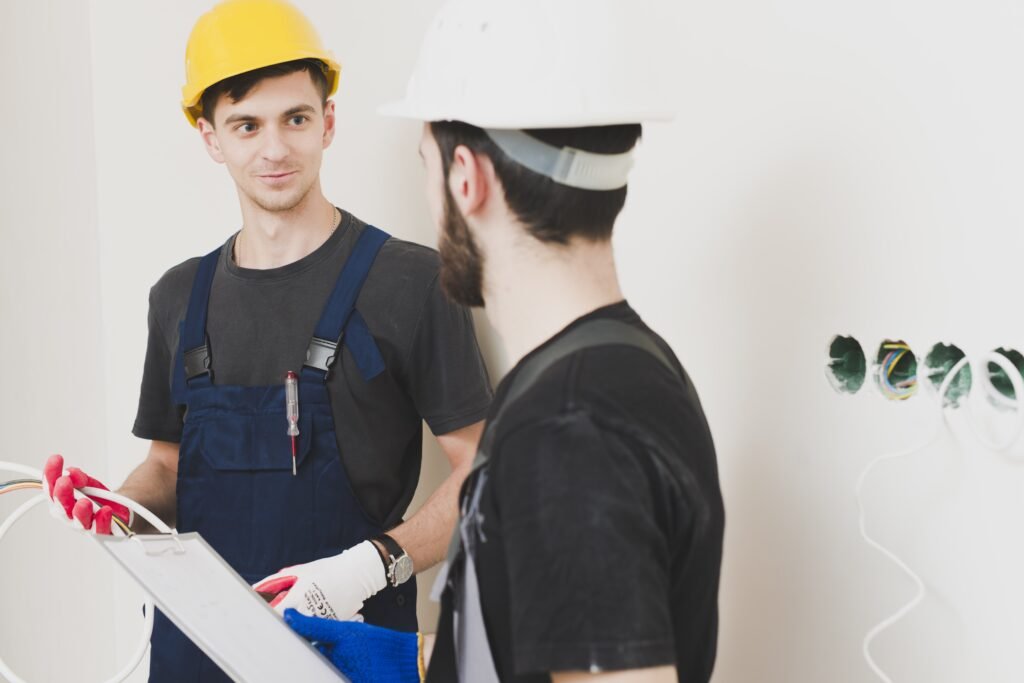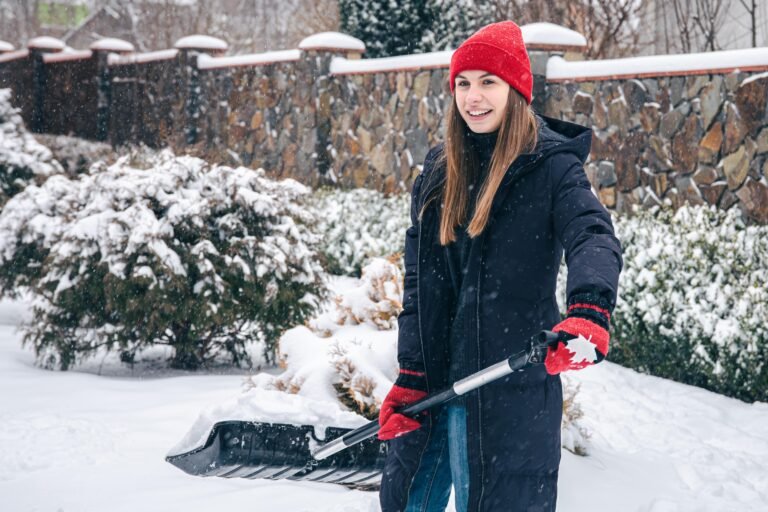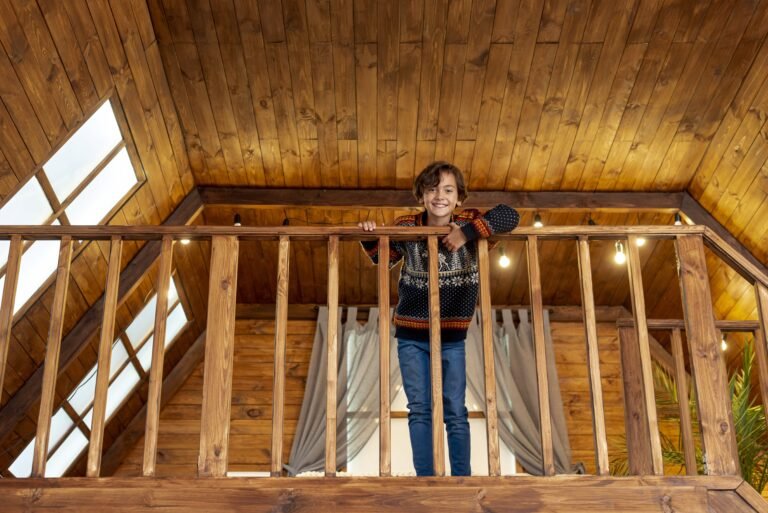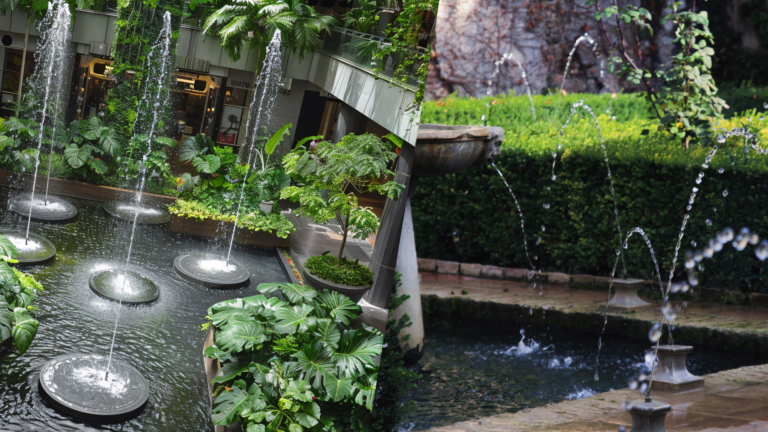Expert Tips on Outdoor Kitchen Installation for Your Home | Learn More
As the weather gets warmer and the days get longer, eating outside becomes more appealing. Setting up an outdoor kitchen can make your summer even better. It not only gives you a great place to entertain but can also increase your home’s value. imagine yourself grilling burgers while your family and friends hang out, or enjoying a cold drink under the stars. Bringing the ease and comfort of your indoor kitchen outside adds a refreshing touch to your home, and doing it well can change the way you enjoy your space.
Setting up an outdoor kitchen takes careful planning and some expert advice to make sure it all works out well. You’ll need to pick the right spot that is both functional and looks good and choose materials that can handle the weather. Every little detail is important, whether you want a simple setup with just a grill and a countertop, or a full kitchen with all the appliances and fancy fixtures. Knowing the basics can help you build a space that’s welcoming and useful.
This guide will help you through the important steps and things to think about when creating your perfect outdoor kitchen. We’ll go over how to plan your layout, pick materials, choose appliances, and even share tips on keeping everything running smoothly. By the end, your outdoor cooking area won’t just look great it’ll also be durable. Let’s make your summer parties something special with an outdoor kitchen that fits your home and the way you live.
Planning Your Outdoor Kitchen
The project journey of installing an outdoor kitchen begins with a solid plan. It is a lot more than just putting your barbecue in a specific place. It is about creating a functional, efficient, and pleasurable space. Here is how to go about planning:
- Evaluate Your Space: First, consider how big the available outdoor space is. Measure it, and ensure that nothing will be crammed. Visualize how the kitchen will flow with other parts of your yard, garden, or patio areas.
- Decide on the basics: Position your kitchen in such a way that it is protected from the wind, meaning that you can cook with little wind blowing the heat and smoke towards you, but so you can benefit from natural shade or plan for a pergola or canopy that will protect you from the sun.
- Pick Your Features: Consider what features are going to be most important in your outdoor kitchen. While you may view a grill, sink, and prep area as the basics, you may see a refrigerator, pizza oven, or bar area as add-ons. Consider priority when you are cooking.
- Utility Access: Make sure that the utilities required for the kitchen, like water, gas, and electricity, are all easily accessible. And hence, the location of some of the features in your kitchen may be influenced by this. Discuss this with your experts to ensure the setup will be safe and approved by the local building code.
- Design Layout: Sketch a rough layout, or use design software, to see how the space will be used. Common layouts include the straight line, the L-shape, and the U-shape, each with its benefits for cooking and socialization. This layout will help promote good workflow, with a grill, sink, and refrigerator forming a great work triangle.
A clear plan will set you up with a seamless installation. This first push will guarantee that your outdoor kitchen not only looks nice but also performs very well while being a center of homes for the many summers ahead.
What are the Essential Components of an Outdoor Kitchen?
An outdoor kitchen can be very basic or very elaborate, but a couple of things are really necessary in the design for the area to be functional and versatile. Here is a brief overview of the important things that should be included in any outdoor kitchen design:
- Grill: The focal point in virtually all outdoor kitchen blueprints, the type of grill can range from a modest barbecue pit to a full-size, tricked-out gas model with multiple burners–whatever you want or can spring for. Decide if you want such add-ons as side burners, a rotisserie, or a smoker.
- Prep and Counter Space: Plenty of counter spaces are a prerequisite for all the food prep right from the outdoors and for serving it. In addition, durable materials such as granite or stainless steel are fine for outdoor countertops. Make sure you have enough space to comfortably handle all of your prep work.
- Storage: One can never put enough emphasis on the value of built-in cabinets and drawers in an outdoor kitchen. The cabinets keep various utensils, pots, and pans and also save them from natural exposure. One should, therefore, look for weather-resistant materials to ensure durability.
- Refrigeration: A refrigerator or cooler stores needed ingredients, beverages, and condiments, maintaining a chilled and nearby status. An outdoor-rated refrigerator will be designed with the ability to withstand fluctuations in temperature and humidity.
- Sink and Water Supply: A sink in your outdoor kitchen allows for cleaning food and using water. This will substantially reduce the back-and-forth congestion between the outside and inside kitchen, making much of the experience of cooking outside more self-contained and efficient.
- Lighting: Proper lighting is key to your al fresco kitchen area and allows for some festivity when the sun goes down. Options go from task lighting assigned over grill and preparation areas to ambient lighting for dining and social areas.
- Shelter and Heating: If your climate is appropriate, then some form of protection from the sun and rain will help make your outdoor kitchen much more pleasant to use. Popular options include pergolas, awnings, and even full pavilion covers. For cooler climates, consider adding heaters to extend the usability of the space into the cooler months.
Not only will your outdoor kitchen elevate your cooking and entertainment, but for most people, it will be their favorite and the best part of your home.
Installation Tips

Proper installation is key to ensuring your outdoor kitchen is safe, effective, and durable. Here are some expert tips that will help you when installing an outdoor kitchen:
- Hire Professionals: Even though some aspects of the installation process might seem doable, local codes should be met and the best practice is to hire a professional to do the gas, plumbing, and electrical work. This will ensure everything is working properly and safely.
- Check Local Regulations: It will be advisable to check with the local zoning office in good time to get any permits that will be needed and to comprehend if there are limitations. This is an extremely necessary step in keeping away from legal implications that may arise from non-compliance.
- Choose Weather-Tolerant Materials: The materials in the outdoor kitchen have to be weather-tolerant. Some of the popular choices include stainless steel for the appliances, natural stone or concrete for the countertops, and bricks or stone for construction.
- Consider Ventilation: When setting up, keep in mind that good ventilation is required, particularly if your setup involves a grill or smoker under a covered area. Ensure there’s free movement of air to disperse smoke and heat safely.
- Utilities Access Plan: The placement and layout of the outdoor kitchen should be designed in such a manner that it allows the best access to utilities. Running water, gas, and electricity lines required in the outdoor kitchen should be planned well, and help from a professional should be taken to ensure that the layout is efficient and the connections are safe.
- Sturdy Flooring: Provide a floor made of a material that is stable, clean, and not slippery, such as concrete, tile, or natural stone. Make sure that the foundation is completely level and capable of holding the weight of large appliances.
- Test Everything Before Finalizing: Install everything, although you don’t need to complete the paneling or other adornments yet. Test all the appliances and fixtures to ensure they work correctly. Look for leaks, electrical problems, or functional defects.
Follow these tips for installing an outdoor kitchen to ensure it serves you well and adds value to your home. Many enjoyable summers are around the corner.
Weatherproofing and Protection
To ensure your outdoor kitchen lasts a long time, protecting it from the weather is essential. Here are some key strategies to weatherproof and safeguard your investment:
- Choose Weather-Resistant Materials: For your outdoor kitchen, always go for materials that can withstand the weather. Stainless steel is great for appliances because it resists rust. For countertops, consider granite, concrete, or glazed tiles, as they are stylish and resist sun and moisture.
- Awning and Enclosures: Protect your space and appliances from harsh weather with a permanent roof structure like a pergola or pavilion. Retractable awnings and weatherproof covers for appliances and furniture add extra protection. They shield against rain and sun and help keep your outdoor kitchen components in good condition.
- Sealing and Waterproofing: Regularly seal wood elements and stone countertops to prevent water absorption, which can cause cracking and weathering. Use the right sealants for the specific materials in your kitchen to keep moisture out and maintain their appearance and functionality.
- Drainage Solutions: Proper drainage helps prevent water accumulation that can damage your kitchen structure and foundation. Make sure your flooring has a slight slope to allow water runoff, and if your kitchen area tends to pool, consider installing additional drainage solutions.
- Protective Coatings: Apply protective coatings to metal frames and wood elements to prevent rust and decay. Regular maintenance, such as cleaning and reapplying finishes, will keep your outdoor kitchen looking new and prevent long-term damage.
- Windbreaks: In windy areas, add side walls, glass windbreaks, or shrubs to block strong winds. High winds can cause damage and make cooking difficult.
Implementing these weatherproofing and protection measures will greatly enhance the durability and enjoyment of your outdoor kitchen, allowing you to host many memorable gatherings regardless of the weather.
Cost Considerations
As is any aspect of design, budgeting is just as critical when designing an outdoor kitchen. Here’s a preview of what to consider to manage costs well in the process of creating your dream outdoor kitchen:
- Budget Realistically: Start by setting how much you want to spend on the outdoor kitchen. Understand that the project is probably going to have unforeseen costs, just like any home improvement project. It’s always safe to reserve an extra 10-20% above your budget for unexpected costs that could arise during the installation process.
- Go for Cost-Effective Materials: You want durable, weather-resistant materials, but there are plenty of them across different price points that can serve your purpose without breaking the bank. For example, concrete countertops are cheaper than granite but still provide durability and style. Similarly, prefabricated modules can significantly reduce costs compared to custom-built structures.
- DIY vs. Professional Installation: Determine what parts of the job you can do yourself versus what is better left to professionals. Simple tasks like putting together prefabricated components can be handled by you, but plumbing, electrical, and gas connections should be left to qualified professionals for safety and to ensure compliance with local codes.
- Appliance Choices: The choice of appliances can have a dramatic effect on cost. You should go with essential appliances, such as a good-quality grill and maybe a refrigerator, and skip luxury items for now. You may want a wine cooler or a built-in deep fryer, but if they’re not crucial for your cooking style, cut them out.
- Scale and Complexity: When budgeting for your outdoor kitchen, know that size and complexity go hand in hand with cost. A smaller, simpler setup with just a few high-end appliances is more cost-effective. Start with the basics and expand as your budget allows.
- Maintenance and Upkeep Costs: Consider the long-term costs of maintaining the outdoor kitchen. While higher-quality materials might have higher upfront costs, they can lead to lower maintenance costs. Regular maintenance also prevents costly repairs and extends the life of your kitchen.
Through proper planning and considering these factors, you can create an outdoor kitchen within your budget while still providing a functional and enjoyable space for cooking and entertaining.
In conclusion
Setting up an outdoor kitchen in your home will give great pleasure to the dining and entertaining experience while at home. With a well-thought-out layout, proper component selection, and best practices, you can create an outdoor cooking area that is both functional and beautiful. Honestly budget for the investment and protect your outdoor kitchen to keep it affordable and long-lasting. With expert tips like these, your outdoor kitchen will not only serve you well but also greatly enhance the value of your home while providing endless enjoyment for you and your guests in the great outdoors. So fire up the grill and start cooking in your new outdoor space where many cherished memories will be made under the open sky.
FAQs
What is the first step in installing an outdoor kitchen?
The first step is planning. Measure your space, decide on the layout, and choose the features that best fit your needs and budget.
How do I choose the right location for my outdoor kitchen?
Consider factors like proximity to your indoor kitchen, shelter from wind and sun, and ease of access to utilities such as water and electricity.
What are the must-have components for any outdoor kitchen?
Essentials include a grilling station, ample counter space for prep, storage options, a refrigerator, and a sink.
How can I keep costs down when installing an outdoor kitchen?
Opt for cost-effective materials, consider DIY options for certain tasks, and focus on must-have items rather than luxury additions.
What materials are best for outdoor kitchens to withstand the weather?
Stainless steel, concrete, and granite are durable choices for appliances and surfaces that can withstand various weather conditions.







